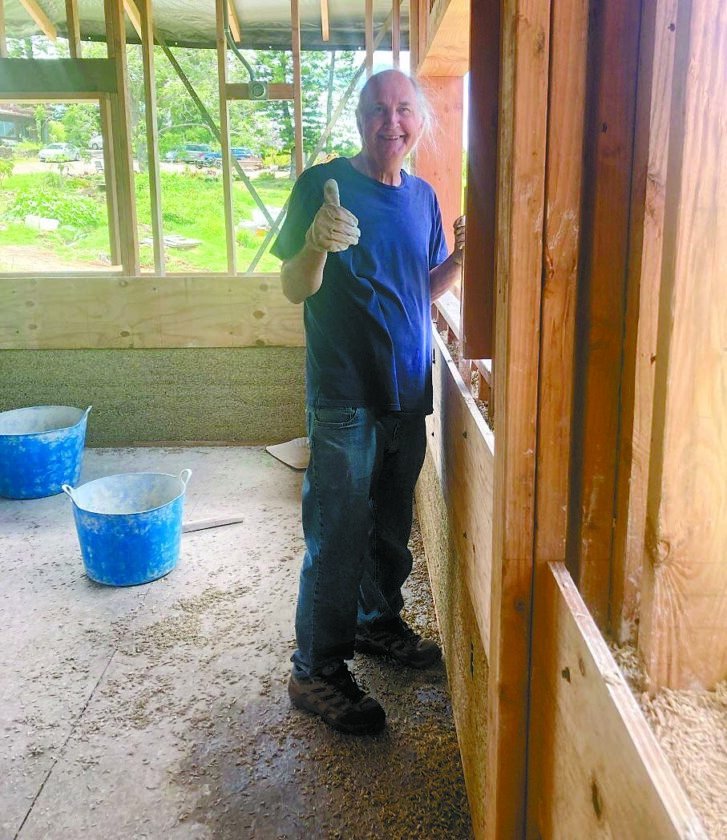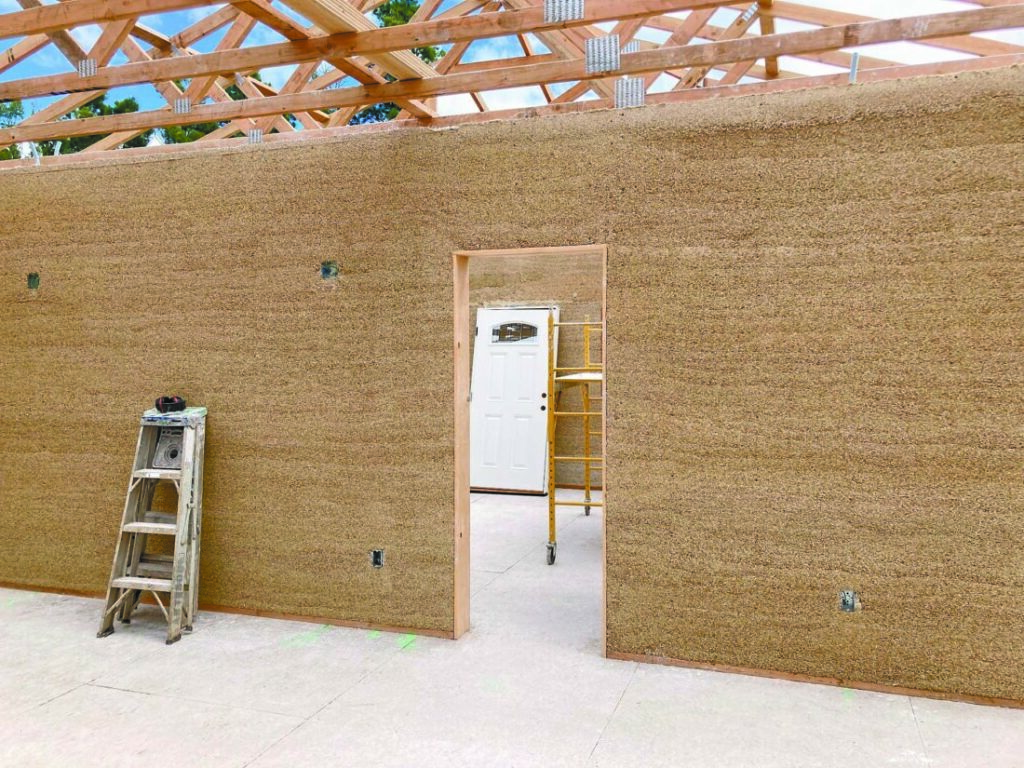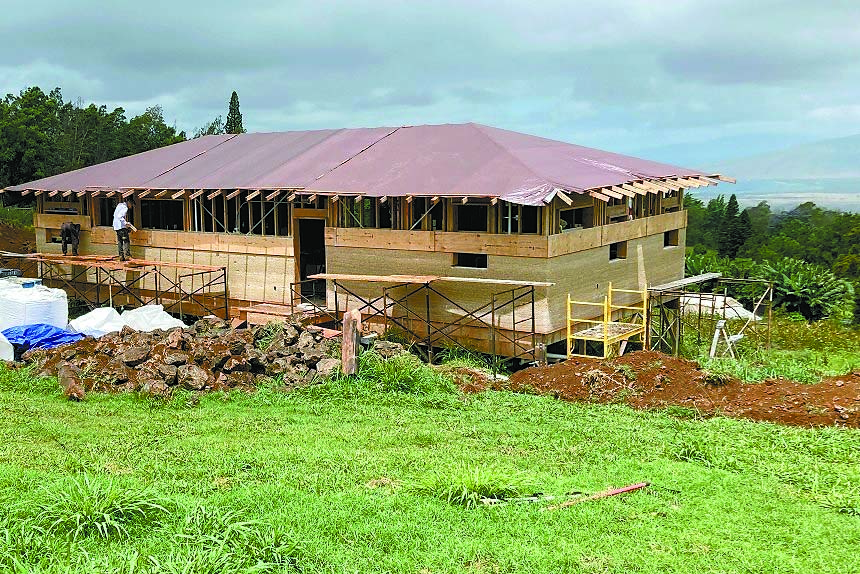The second home on Maui, Hawaii using hempcrete for wall construction has been completed. Hempcrete is not only fire, mold and termite resistant, it’s also non-toxic, sound insulating, energy efficient, and absorbs carbon dioxide from the air.
 The owner, Jon Woodhouse, says, “Walking into my home, you can feel the difference compared to conventional home construction. There’s a sense of stillness that’s palpable. One feels calm, almost like entering a sanctuary.
The owner, Jon Woodhouse, says, “Walking into my home, you can feel the difference compared to conventional home construction. There’s a sense of stillness that’s palpable. One feels calm, almost like entering a sanctuary.
Every sheet of drywall is imported to Hawaii, so why not manufacture something locally? You can grow your own house practically in the field next door. A hemp crop for building a three-bedroom home can be grown on around two and a half acres of land, and it will take about four months to mature. Hemp’s remarkable environmental benefits were compiled in a 2022 U.S. Department of Agriculture report on hemp production in Europe. They include “carbon storage, erosion prevention, increased biodiversity, low to no pesticide requirement, and breaking disease cycles in crop rotation.” As a climate solution, hemp absorbs up to two times more CO2 than a typical forest.
In terms of building safety, the use of hemp-lime mixtures as a non-load-bearing building material was included in the 2024 International Residential Code (IRC), which governs U.S. residential building codes for 49 out of 50 states, including Hawaii.
 Besides the method used to construct Jon’s home, you can make bricks out of hempcrete, you can 3D print with hempcrete, use engineered hemp wood, and even spray a mixture of water, lime and hemp inside walls instead of foam insulation. Hempcrete homes are projected to last for hundreds of years.
Besides the method used to construct Jon’s home, you can make bricks out of hempcrete, you can 3D print with hempcrete, use engineered hemp wood, and even spray a mixture of water, lime and hemp inside walls instead of foam insulation. Hempcrete homes are projected to last for hundreds of years.
Eco-friendly construction materials like hemp actively contribute to healthier living environments and enhance indoor air quality, lowering the risk of respiratory ailments, allergies, and other adverse health effects.
Hempcrete construction does have a few drawbacks. It’s a slow, labor-intensive process of methodically packing the hempcrete into forms between the 2×4 framing studs.
 Once dried, the walls were plastered and then painted with non-toxic, white limewash paint. Containing no volatile organic compounds, limewash is breathable, and bacteria and mold-resistant. Three walls were also painted with natural pigment colors.
Once dried, the walls were plastered and then painted with non-toxic, white limewash paint. Containing no volatile organic compounds, limewash is breathable, and bacteria and mold-resistant. Three walls were also painted with natural pigment colors.
Maui Councilmember Gabe Johnson supports hempcrete as an alternative building source, saying “I am a big proponent of industrial hemp which can benefit local farmers, economic development and diversification, affordable housing supply, and a resilient and healthy environment.”
You can read the original article at www.mauinews.com


Amazing how hemp has been destigmatized from being associated with illicit drugs to becoming a viable building material.